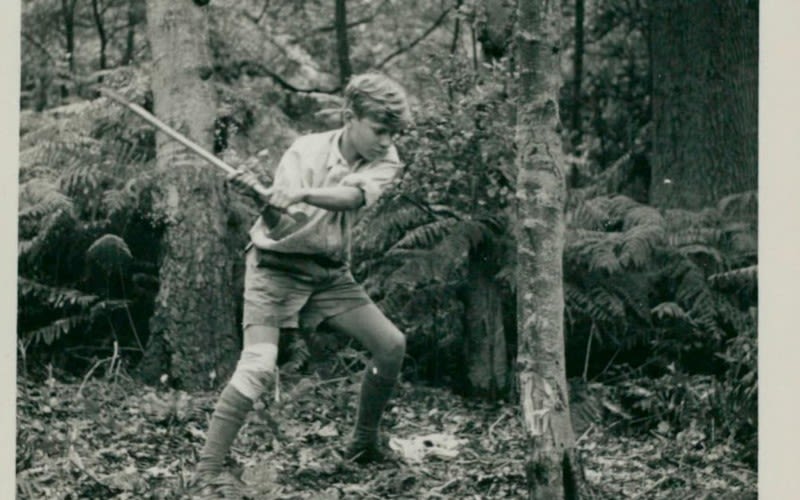That Dark Spring: Stumbling upon an eccentric family story
My family history (like many others) is filled with eccentric stories. There is the account of my uncle who became famous for eating grass. And my mother, who took glider lessons disguised as a boy, and then enlisted in the WRENS during World War II. And now, the story of my (murdered) Great Aunt Olive who was found dead in a water tank in the South of France with a single bullet in her head. But the details of this one were always hazy. So, you wouldn’t believe my surprise and delight to learn the brilliant author, Susannah Stapleton, has just published a book about it, titled That Dark Spring.
In a jetlagged haze, I read it cover to cover. It’s a strange thing, to read gruesome details of a long-lost family member’s untimely death. But it was very comforting to read about her quirks and characteristics, which felt so familiar and hereditary. In many ways, it felt like I knew her. Even the photographs captured throughout the book showed some familiar features.
I may be biased, but the book is quite brilliant. The author captures the life of an adventurous, bohemian, and intriguing woman in incredible detail, while also transporting the reader right back to 1929, to a town called Les Baux in Provence. It’s true crime meets Agatha Christie, and I found myself lost in the story, forgetting I was reading family history.
What I appreciate the most, is that the author gave Olive Branson a voice. Stapleton had come across the case in an old book of French mysteries. And the book had been quite dismissive of Olive as a victim. And while Olive’s case was initially shrugged off as suicide, Stapleton recounts a follow-up detective’s case, which convincingly proves it was murder.
What is abundantly clear is that Olive Branson was an entirely unique woman who marched to the beat of her own drum. She had a restless spirit, endless determination, and a rebellious streak. She threw herself into whatever task came her way, from coordinating arts fairs to exhibiting in the Royal Academy in London. Perhaps it stemmed from her childhood, growing up as a neighbour to Virginia Woolf and the rest of the Bloomsbury Group. Olive’s story also reminds me of my talented sisters, who are respectively wonderful artists (Lindy) and proliferators of the artistic community (Vanessa). Olive also had a deeply generous streak – saving a hotel on the brink of bankruptcy, helping to restore the town, and paying doctors’ bills for those who couldn’t afford it.
Another aspect of the story I loved was hearing about the “armour of self-confidence” that the Branson’s instilled in their children. This, alongside a “carefree yet pragmatic spirit” runs through our family to this day. As Stapleton writes: “The Branson siblings were encouraged to embrace all aspects of themselves and pursue their own idiosyncratic interests with pride. William’s poetry, for example, would be celebrated equally alongside his burgeoning medical career, while Jim’s nosebag of grass cuttings would be accommodated on high days and holidays with the minimum of fuss.”
I hope this sense of acceptance and rebellion continues in our family for generations to come. It was perfectly articulated in a letter written by Olive, when she said: “Do as you want and not as you’re told to do.”
Thank you, Susannah, for bringing Olive’s spirit to life, and telling her story in such a riveting way. If you want a really well-researched, good, gripping read, you can find the book right here.






